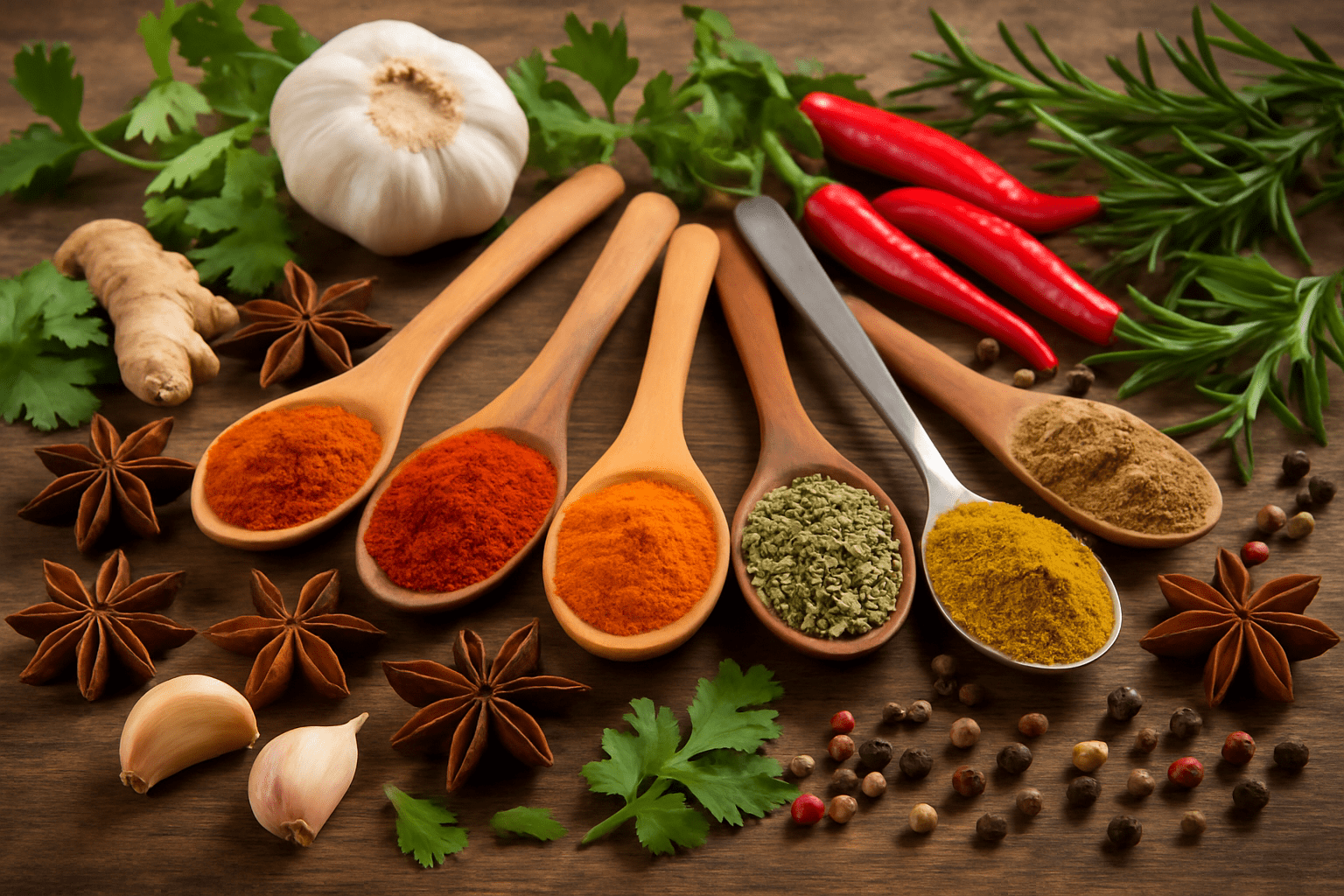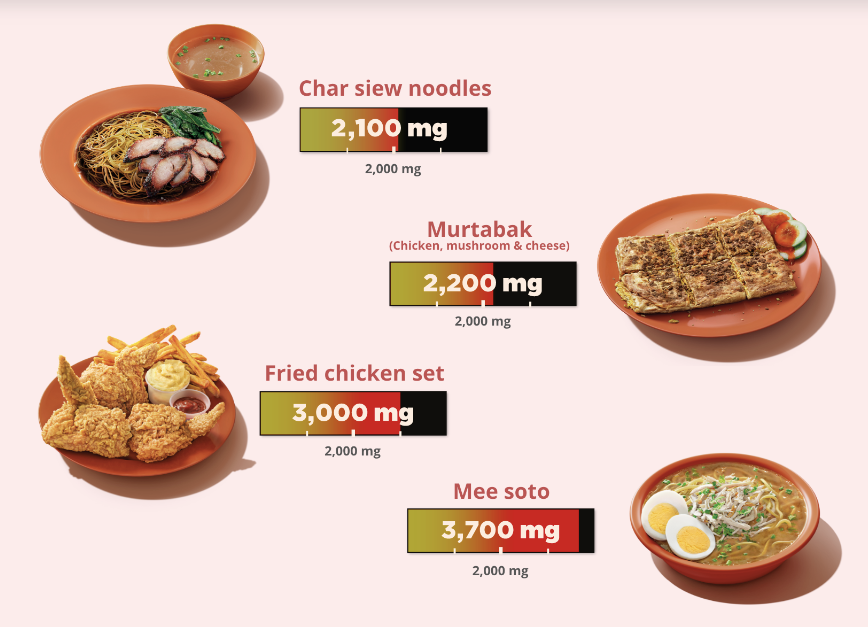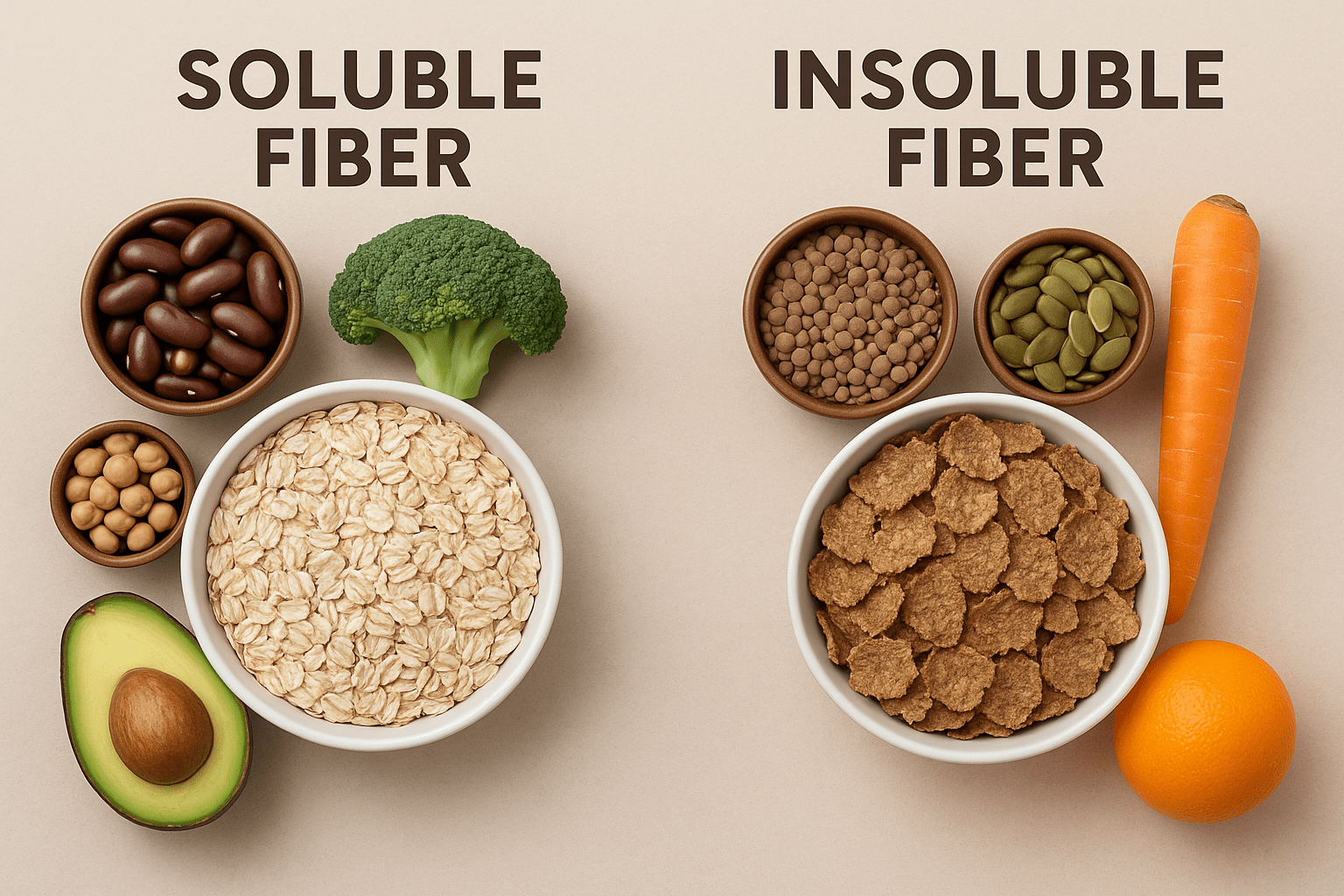The World of Spices and Herbs

Spices and herbs have been used for centuries to enhance the flavour, aroma, and appeal of food. Beyond their culinary roles, they offer a healthy alternative to reduce the reliance on sodium and sugar in cooking. In this article, we explore how spices and herbs can transform your meals, the effects of sodium and sugar on the body, and healthier ways to elevate your dishes without compromising on taste.
Do We Need Sodium in Our Diet?
Sodium is a naturally occurring mineral found in foods and a key component of salt (sodium chloride), which is about 40% sodium and 60% chloride. Sodium is a vital mineral that plays an important role in regulating fluid balance, supporting nerve and muscle function, and maintaining healthy blood pressure. Despite its importance, the body requires only a small amount—approximately 2,000 mg per day (about 1 teaspoon of salt)—to perform these functions. Consuming more than this recommended amount, as is common in modern diets, can have negative health effects, including:
- High Blood Pressure: Too much sodium can cause the body to retain water, increasing blood pressure and straining the heart.
- Kidney Damage: Excess sodium can overload the kidneys, potentially leading to kidney disease.
- Heart Disease and Stroke: Chronic high sodium consumption raises the risk of cardiovascular complications.
Sources of Sodium
The ability to detect excessive saltiness in food diminishes over time as taste buds become desensitized, although the sensitivity improves with a period of reduction or abstinence. While processed foods are often thought to be the primary source of sodium, the reality is more nuanced with about 64% of sodium intake comes from salt, seasonings, marinades, sauces and stocks added during the cooking process, 10% comes from ultraprocessed convenience foods like instant noodles, while the remaining sodium comes from other sources, including bread products, processed meats, seafood, ready-to-eat meals, and snacks. While salty snacks are obvious culprits, sodium is often "hidden" in foods where you might not expect it, such as:
- Sweet foods: Cornflakes and baked goods can have surprising sodium content.
- Sour foods: Tomato ketchup, salad dressings, and sauces often contain high levels of sodium despite their tangy taste.
Calculate Your Sodium Intake
When dining out, one can easily over-consume sodium in just a single meal as shown below. Try calculating your sodium intake here!

Enhancing Flavours Sodium and Sugar Free
Salt and sugar are popular flavour enhancers because salt elevates savoury flavours and balances bitterness, making food including vegetables like bitter gourd more appealing, while sugar adds sweetness and offsets sourness and downplays spiciness, making food more palatable. Yet, over-usage of these flavour enhancers in your food contributes to health problems like high blood pressure, obesity, and diabetes.
The good news is that you don’t need to rely solely on salt and sugar to create flavourful meals. There are healthier ways to bring out the best in your food:
1. Spices
Spices like cinnamon, chilli, cumin, paprika, nutmeg, turmeric, and black pepper add depth and complexity to dishes. For example:
- Cinnamon: Adds warmth and sweetness to baked goods and drinks.
- Cumin: Adds depth and earthy flavour to savoury dishes with added anti-inflammatory benefits.
- Chili Powder: Brings heat and zest to savoury dishes.
- Nutmeg: Adds warmth and a subtle sweet-spicy and nutty note to both savoury and sweet dishes.
- Paprika: Ranges from mild and sweet to hot and smoky, depending on the type. Sweet Paprika: Adds mild sweetness and vibrant color, while Smoked Paprika: Introduces a smoky depth, ideal for barbecued or roasted dishes. Paprika is great in soups, stews, grilled meats, and rubs for poultry or seafood.
- Turmeric: Provides earthy flavour and vibrant colour, with added anti-inflammatory benefits.
Get to know the spices by their scent and taste. Each spice will bring unique qualities to your meals, allowing you to layer flavors and create memorable dishes.
2. Herbs
Fresh or dried herbs like basil, cilantro, spring onions, thyme, rosemary, and parsley enhance the aroma and taste of food. For example:
- Rosemary: Pairs well with roasted meats and vegetables, even baked cheese.
- Basil: Adds a fresh and slightly sweet note to pasta, sauces, salads and meat dishes like the Thai Basil Minced Pork dish.
3. Citrus
Lemon and lime juice, as well as their zest, can brighten and enhance both the aroma and flavour of dishes, reducing the need for added salt or sugar.
4. Vinegars
Balsamic, apple cider, red wine vinegars, rice vinegar add tangy complexity to dressings, marinades, sauces and cuts the grease without excess sodium or calories.
5. Aromatics
Garlic, onions, ginger, and scallions build a strong flavour base for many cuisines, thus, significantly reduce the need for salt.
6. Natural Sweeteners
When sweetness is needed, consider using small amounts of honey, or fruits like dates, pears, figs, sweet oranges or berries.
Experiment, be familiar with the aroma and taste profile of the above and incorporate them into your cooking and food. By making small adjustments to your diet, you can maintain a healthier balance while still enjoying delicious, flavourful meals. Life doesn't have to be bland to be healthy! Ask Mandy for some healthy recipes to incorporate some herbs and spices you already have in your kitchen.
References:
- Health Promotion Board Singapore. (n.d.). Eat less: Tips to eat healthier by reducing salt, sugar, and fat intake. Retrieved December 18, 2024, from https://www.healthhub.sg/programmes/nutrition-hub/eat-less


